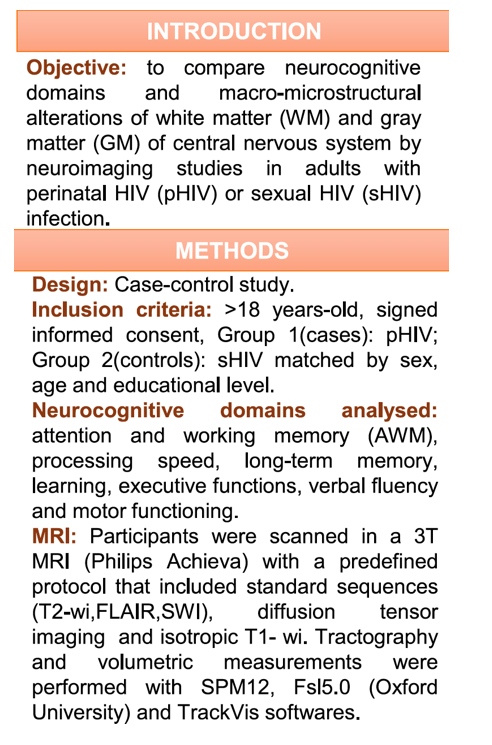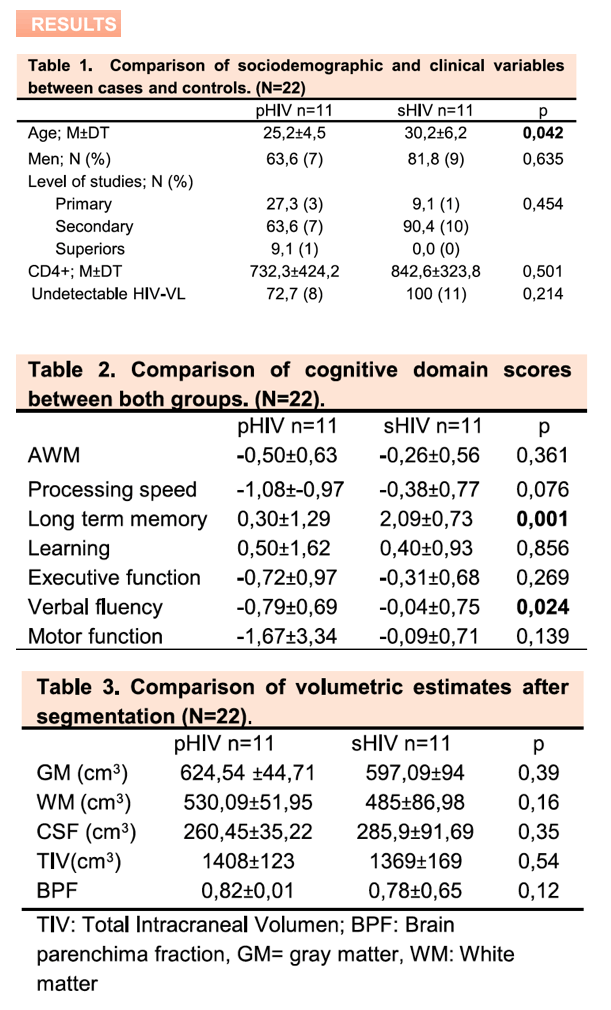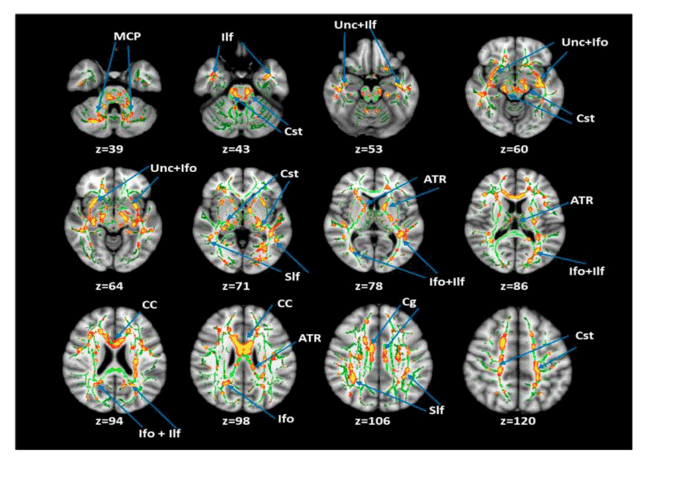 |
 |
 |
| |
Increased neurocognitive impairment and white matter damaged in young adults with perinatal HIV infection. A case-control study
|
| |
| |
EACS 2021 Oct 27-30
I. Portilla-Tamarit1,2,3,4, Á. Bernabéu-Sanz5, G. García-Rodríguez3,2,4, C. L6, S. Reus3,2,4, J. Portilla3,2,7,4
1University of Alicante, Health Psichology, Alicante, Spain, 2Alicante Institute for Health and Biomedical Research (ISABIAL), Alicante, Spain, 3Alicante University General Hospital, Infectious Diseases Unit, Department of Internal Medicine, Alicante, Spain, 4Spanish AIDS Research Network, Madrid, Spain, 5Inscanner S.L., Magnetic Resonance Department, Alicante, Spain, 6General University Hospital of Alicante, Radiodiagnosis Department, Alicante, Spain, 7Miguel Hernandez University, Department of Clinical Medicine, Elche, Spain
Purpose or Objective
To compare neurocognitive domains and macro-microstructural alterations of white matter (WM) and gray matter (GM) of central nervous system by neuroimaging studies in adults with perinatal HIV (pHIV) or sexual HIV (sHIV) infection.
Results
Case-control study. Inclusion criteria: >18 years-old, signed informed consent, Group 1(cases): pHIV; Group 2(controls): sHIV matched by sex, age and educational level. Neurocognitive domains analysed: attention and working memory, processing speed, long-term memory, learning, executive functions, verbal fluency and motor functioning. Participants were scanned in a 3T clinical MRI (Philips Achieva) employing a predefined protocol that included standard sequences (T2-wi,FLAIR,SWI), diffusion tensor imaging and isotropic T1 weighted images for tractography and volume calculations processed with research available softwares (Oxford Unversity).
Materials and Methods
11 pHIV and 11 sHIV participants were included. Non-significant differences between both groups were observed in sociodemographic and clinical variables, except in age: 25.2±4.5y vs 30.2±6.2 (p=0.04) respectively. Participants with pHIV showed significant worse neurocognitive scores: long-term memory (p=0,001), and verbal fluency (p=0,02) compared with sHIV. No significant differences were observed in GM and WM between groups using conventional MRI. Tract-based spatial statistics analysis found significant WM damage in several tracts in the pHIV group compared to sHIV(p<0.05). We observed significant associations between executive (r=0.65;p=0.001), learning (r=0.52,p:0.013), and motor functions (r=0.64;p: 0.001) and integrity of corpus callosum fibres. Also, between cognitive functions and damage of several WM tracts: cingula (left hemisphere r=0.63;p=0.001; right hemisphere r=0.66;p=0.001), frontoccipital fasciculi (left hemisphere r=0.78;p<0.001; right hemisphere r=0.75;p<0.001), and inferior longitudinal fasciculi (left hemisphere r=0.62;p=0.002; right hemisphere r=0.46;p=0.03).
Conclusion
Despite normal appearance of conventional MRI scans, tractography detects significant damage in several WM tracts and fasciculi in pHIV participants. An early HIV infection affecting a brain in development, could explain the observed WM damage, neurocognitive impairment and motor dysfunctions observed during the adulthood.




|
| |
|
 |
 |
|
|